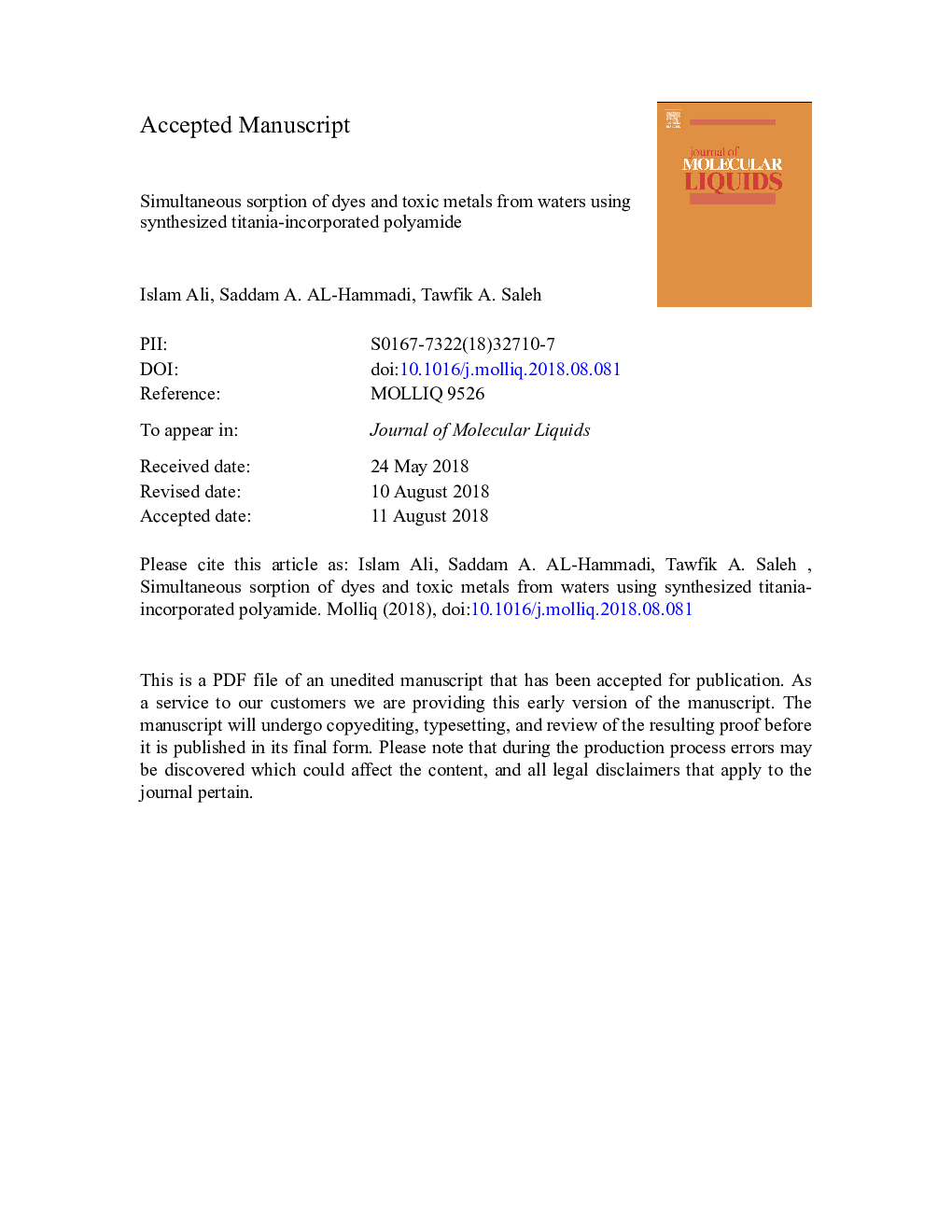| Article ID | Journal | Published Year | Pages | File Type |
|---|---|---|---|---|
| 7841673 | Journal of Molecular Liquids | 2018 | 26 Pages |
Abstract
Interfacial polymerization of trimesoyl chloride (TMC) and 1,3- phenylene diamine (MPD) was simultaneously combined with the in-situ formation of TiO2 from TiCl4 using urea. The titania-polyamide nanocomposite (TPN) was characterized by using X-ray diffraction, Fourier transform infrared spectroscopy, N2-physisorption analysis and a scanning electron microscope equipped with energy-dispersive X-ray spectroscopy. The TPN was evaluated as an adsorbent for the removal of dyes. It showed high efficiency for the removal of several dyes in the order: methylene blueâ¯>â¯bromo phenolâ¯>â¯methyl orangeâ¯>â¯congo redâ¯>â¯rhodamine B. The dosage, contact time, and temperature which are the main factors that affect adsorption efficiency, were optimized. Among isotherm models, the experimental adsorption results fitted well with the Langmuir model with a maximum adsorption capacity of 43â¯mg/g. Kinetic experiments were conducted to describe the equilibrium rate. The model of the pseudo-second-order adequately fitted the experimental data with a correlation coefficient R2 of 0.998. Thermodynamic studies were performed to evaluate the performance of TPN at various temperatures. Thus, parameters including free energy (ÎG°), enthalpy (ÎH°) and the entropy (ÎS°) were calculated. The influence of the interference on adsorption was investigated in the presence of metals including Ni, Hg, As, Cu, and Cr. Interestingly, with â100% removal of the dye, TPN showed a rapid simultaneous uptake of the toxic metals as well.
Related Topics
Physical Sciences and Engineering
Chemistry
Physical and Theoretical Chemistry
Authors
Islam Ali, Saddam A. AL-Hammadi, Tawfik A. Saleh,
